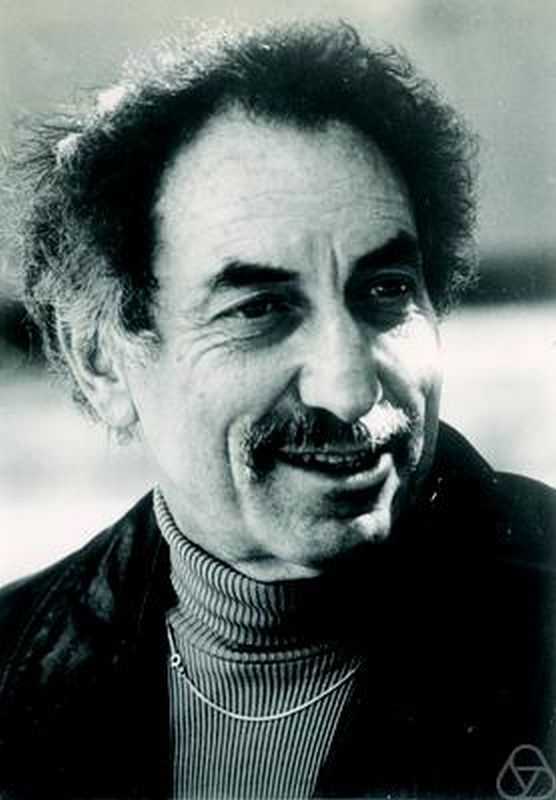It's a well known fact that every $\sigma$-algebra $\mathcal{F}$ of measurable subsets of $\Omega$ can be thought as a boolean algebra with correspondence
$$ \emptyset \cong 0 \quad \Omega \cong 1 \quad A \cap B \cong A \wedge B \cong AB
\quad A \triangle B \cong A \oplus B \cong A + B .
$$
It is also a well known fact that with this notation $(\mathcal{F},\cdot,+)$ is a commutative ring and for any meaure $\mu$ set $I_0 = \{ A \in \mathcal{F} : \mu(A) = 0 \}$ is a $\sigma$-ideal of this ring.
Now let $\mu$ be an infinite measure over measurable space $(\Omega,\mathcal{F})$ (assume $\mu(\emptyset)=0$) and define $A_\infty =\{ A \in \mathcal{F} : \mu(A) = \infty \}$. At the first glance it seems that this set doesn't have any intersting algebraic structure. However, now I feel that there is some parallelism between structure of $A_{\infty}$ and group of units of arbitrary nontrivial commutative ring $R$, denote it by $U(R)$ and denote nilradical of $R$ by $I_0(R)$ . Then
$$ 1 \in A_\infty \quad 1 \in U(R) $$
$$ 0 \not \in A_\infty \quad 0 \not \in U(R) $$
$$ \forall b \in A_{\infty}^\complement \forall a \in A_{\infty} \; a +b \in A_\infty
\quad
\forall b \in I_0(R) \forall a \in U(R) \; a +b \in U(R)
$$
$$ \forall b \in A_{\infty}^\complement \forall a \in A_{\infty} \; ab \not \in A_\infty
\quad
\forall b \in U(R)^\complement \forall a \in U(R) \; ab \not\in U(R)
$$
Clearly $A_\infty \neq U(\mathcal{F}) = \{ \Omega \}$, however we still can see some common structure on this sets, so there must be some name for it (I would call such sets antiideals, but I don't think this is correct at all).
P.S.
Now I googled actual definition of antiideal at nLab.
That is set $A \subset R$ is an antiideal of $R$ if
1. $0 \not \in A$
2. if $a + b \in A$ then $a \in A$ or $b \in A$
3. if $ab \in A$ then $a,b \in A$
Clearly we can see that if by definition $0 \not \in A_{\infty}$ by definition of $A_{\infty}$ (1. holds).
$\infty =\mu(a \triangle b) \le \mu(a \cup b) \le \mu(a) + \mu(b)$ so either $a \in A_\infty$ or $b \in A_\infty$ (2. holds).
$\infty = \mu(a \cap b) \le \mu(a)$ so $a \in A_\infty$ (3. holds).
This shows that $A_\infty$ is indeed an antiideal of $\mathcal{F}$.
Clearly $U(R)$ is not generaly an antiideal. Consider ring $\mathbb{Z}$ with $U(\mathbb{Z}) = \{ 1, -1 \}$ . Then $(3 - 2) \in U(\mathbb{Z})$, however neither $3$ nor $-2$ is a unit.
So the question is still open.
$$ \emptyset \cong 0 \quad \Omega \cong 1 \quad A \cap B \cong A \wedge B \cong AB
\quad A \triangle B \cong A \oplus B \cong A + B .
$$
It is also a well known fact that with this notation $(\mathcal{F},\cdot,+)$ is a commutative ring and for any meaure $\mu$ set $I_0 = \{ A \in \mathcal{F} : \mu(A) = 0 \}$ is a $\sigma$-ideal of this ring.
Now let $\mu$ be an infinite measure over measurable space $(\Omega,\mathcal{F})$ (assume $\mu(\emptyset)=0$) and define $A_\infty =\{ A \in \mathcal{F} : \mu(A) = \infty \}$. At the first glance it seems that this set doesn't have any intersting algebraic structure. However, now I feel that there is some parallelism between structure of $A_{\infty}$ and group of units of arbitrary nontrivial commutative ring $R$, denote it by $U(R)$ and denote nilradical of $R$ by $I_0(R)$ . Then
$$ 1 \in A_\infty \quad 1 \in U(R) $$
$$ 0 \not \in A_\infty \quad 0 \not \in U(R) $$
$$ \forall b \in A_{\infty}^\complement \forall a \in A_{\infty} \; a +b \in A_\infty
\quad
\forall b \in I_0(R) \forall a \in U(R) \; a +b \in U(R)
$$
$$ \forall b \in A_{\infty}^\complement \forall a \in A_{\infty} \; ab \not \in A_\infty
\quad
\forall b \in U(R)^\complement \forall a \in U(R) \; ab \not\in U(R)
$$
Clearly $A_\infty \neq U(\mathcal{F}) = \{ \Omega \}$, however we still can see some common structure on this sets, so there must be some name for it (I would call such sets antiideals, but I don't think this is correct at all).
P.S.
Now I googled actual definition of antiideal at nLab.
That is set $A \subset R$ is an antiideal of $R$ if
1. $0 \not \in A$
2. if $a + b \in A$ then $a \in A$ or $b \in A$
3. if $ab \in A$ then $a,b \in A$
Clearly we can see that if by definition $0 \not \in A_{\infty}$ by definition of $A_{\infty}$ (1. holds).
$\infty =\mu(a \triangle b) \le \mu(a \cup b) \le \mu(a) + \mu(b)$ so either $a \in A_\infty$ or $b \in A_\infty$ (2. holds).
$\infty = \mu(a \cap b) \le \mu(a)$ so $a \in A_\infty$ (3. holds).
This shows that $A_\infty$ is indeed an antiideal of $\mathcal{F}$.
Clearly $U(R)$ is not generaly an antiideal. Consider ring $\mathbb{Z}$ with $U(\mathbb{Z}) = \{ 1, -1 \}$ . Then $(3 - 2) \in U(\mathbb{Z})$, however neither $3$ nor $-2$ is a unit.
So the question is still open.
